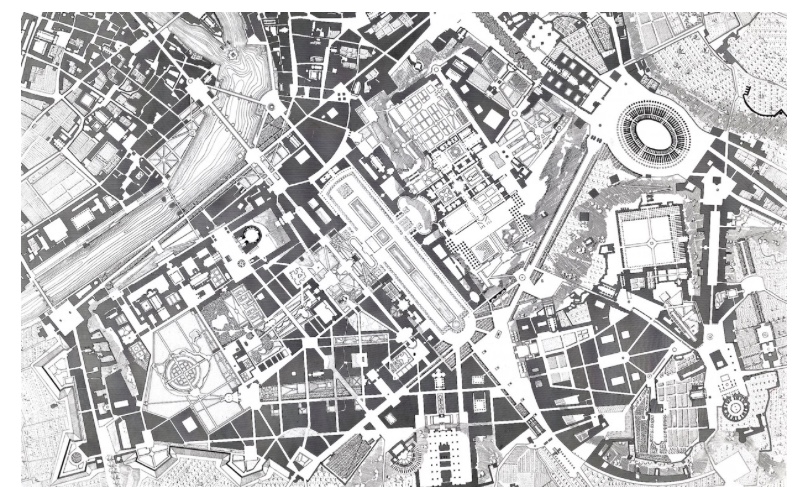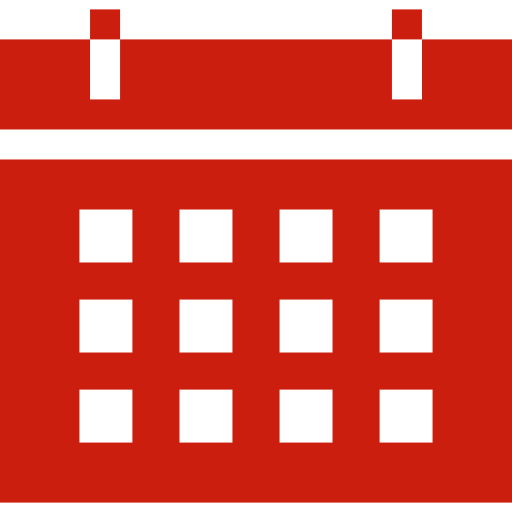Contextualism, Collage City and Beyond
12 November 2021
4:00-6:30pm (CET) 10:00am-12:30pm (EDT New York) (Link)

Coordinator:
David Grahame Shane (Columbia University, NY – USA)
Organizer:
Zuzanna Jarzyńska
Abstract:
It seems an appropriate time to revisit Contextualism and Collage City within the framework of GUDesign network, and the new tools of representation available in the contemporary meta-city of information.
This initial Contextualism, Collage City and Beyond seminar will investigate Colin Rowe’s mid-twentieth century role in appropriating Sitte’s 1890’s reaction to Von Forster’s 1860 imperial design for the Vienna Ringstrasse. Rowe’s critical appropriation paved the way for later iterations and code shifts that greatly expanded into a more fragmented, inclusive Collage City. It took Rowe several iterations to develop this concept with Fred Koetter and with his Roma Interrotta team. Hopefully, this and future seminars will explore strength and weaknesses of the mutations of Rowe’s classical impulse as it, in its turn, evolved with urban design into the 21st century.
Seminar
- Michael Schwarting (New York Institute of Technology - USA, American Academy in Rome Prizewinner), Rome; Urban Formation and Transformation
- Esin Komez Daglioglu and Cansu Turk (METU, Ankara - Turkey), Rowe’s Legacy of Figure-Grounds and Plan Games in Texas and Cornell Pedagogy
- Steven Peterson and Barbara Littenberg (Independent Scholars, Partners in Peterson Littenberg Architects - USA), Collage City from Roma Interrotta to the World Trade Center Competition
- Blake Middleton (Partner Handel Architects, Independent Scholar - USA, American Academy in Rome Prizewinner), Practicing what we Preach
- David Grahame Shane (Columbia University, NY – USA), Contemporary Urban Design and Colin Rowe’s intellectual biography 1938-1978
Discussant: Rosemary Wakeman (Fordham University, NY – USA)
Abstracts
Michael Schwarting (New York Institute of Technology - USA, American Academy in Rome Prizewinner) Rome; Urban Formation and Transformation
Formation is ideal and utopian thinking, and transformation is the adaptation of the ideal to the real or existing conditions. The lecture examines the dialectical relationship of these in the creation of the city; ideal thinking vs. real making. In this investigation, the real making postulates a contextual theory of urban design originating from Colin Rowe’s urban design teaching at Cornell University. This theory postulates that, by understanding and developing the existing urban structure, new architecture can be both integrated into it formally, socially, culturally, politically, and still be progressive. At another scale, it posits that new urban interventions can also be integrated into he existing urban structure
thereby creating a greater whole and continuity, as well as resolving new urban needs.
The presentation examines Italian Renaissance and Baroque architecture and urban development of Rome as case studies, and thus demonstrates the complexity of Roman urbanism and the inter-relationship and role of Roman architecture to its urban context.
The lecture also presents an exploration and demonstration of urban analysis. Through case studies, it documents in drawings and analytic diagrams, the relationship of canonical buildings in Rome to their urban context. These are observations, recordings and analyses of an extraordinary city that can serve as precedent for how to design the contemporary city.
Esin Komez Daglioglu and Cansu Turk (METU, Ankara - Turkey), Rowe’s Legacy of Figure-Grounds and Plan Games in Texas and Cornell Pedagogy
Figure-ground maps are among the most conventional tools of urban design pedagogies and practices worldwide. Architectural theorist and educator Colin Rowe’s Urban Design Studio at Cornell, which he initiated in 1963 and taught until the end of the 1980s, was a milestone in developing and disseminating the use of figure-ground maps as a source of reference for architectural and urban composition. Inspired by Giambattista Nolli’s Nuova Pianta di Roma (1748), which depicts the civic and religious structures in white as successive urban spaces, while rendering housing and commercial structures black as an urban poché, Rowe’s students at Cornell Urban Design Studio utilized figure-ground maps for analyzing the urban textures based on which they bring together and distort the ideal historical forms and types. However, the use of figure-ground maps reduces architecture to its footprint and flattens the topographical features of any given site.
In fact, Rowe discovered an alternative to the figure-ground maps earlier in the 1950s while teaching at the University of Texas School of Architecture. Together with Bernhard Hoesli, John Hejduk and Robert Slutzky, Rowe invented a game where each participant successively drew on a blank sheet the plans of architectural precedents from different periods and geographies by considering their relations and the spaces in between. This Plan Game resulted in a fictional urban design project where the spatial qualities of the architectural and urban spaces were simultaneously considered and articulated. This study aims to uncover the potentials of Plan Game as a tool for urban design pedagogy and practice against the fixed and static nature of figure-ground maps.
Steven Peterson and Barbara Littenberg (Independent Scholars, Partners in Peterson Littenberg Architects - USA), Collage City from Roma Interrotta to the World Trade Center Competition
Collage and contextualism are the two methodologies most associated with Colin Rowe’s work on urban design. They are the essential design concepts that connect individual works of architecture into the blocks of a city’s larger urban fabric.
COLLAGE, in urban design, is the technique of juxtaposing different works of architecture to each other and to existing urban elements in partial new compositions.
CONTEXTUALISM, in architecture, is the technique of designing buildings that are both discrete unto themselves and help form the larger patterns of a city’s urban fabric.
URBAN FABRIC is a city’s extended pattern of blocks, streets and spaces. This is the common denominator of all urban form historically, but has been discarded in the contemporary city’s rapid growth that prioritizes individual tower development. This loss of the urban fabric has eliminated the city’s capacity to define urban space or to shape the public realm.
This talk by BARBARA LITTENBERG addresses these issues in an analysis of the components of the urban fabric and how its restoration was essential to our World Trade Center Design Proposal.
Blake Middleton (Partner Handel Architects, Independent Scholar - USA, American Academy in Rome Prizewinner), Practicing what we Preach
- How a thesis in the Rowe Studio at Cornell provided the tools and the design framework for the author when designing 6 major buildings built over a 20 year period in the historic city center of Boston, MA.
The presentation will reflect on some of the lessons learned in his study of a redevelopment strategy for Providence RI, and how, when engaged to design a 180,000m2 mixed-use project in 1997, these could be applied successfully where previous propositions for the site had failed. The talk will briefly trace the impact of 1960s Urban Renewal on this neighborhood of Boston, how out of-date assumptions about mixed-use projects led to the recurring failure of super-block proposals attempting to rectify the situation, and how re-generation of the urban context was based on contingent, incremental urban design deploying the hybrid high-rise typology that restored the street connecting all these new buildings.
The overview will culminate in examination of the author’s design for a seventh building in this district, begun in 2016, called Winthrop Center. This 175,000m^2 hybrid high-rise will be, when completed, the largest PassiveHausTM building in the world.
A market-rate commercial endeavor (as opposed to institutional or “build-to-suit”), this project represents the future of sustainable urban architecture and a model for how carefully scaled projects can generate further re-investment, and for cities to embrace density at a meaningful scale without sacrificing successful urban space making to the exigencies of getting to a Net Zero architecture.
David Grahame Shane (Columbia University, NY – USA), Contemporary Urban Design and Colin Rowe’s intellectual biography 1938-1978
Colin Rowe transformed and changed over time, constructing and refining his intellectual and conceptual apparatus in response to his changing circumstances. There can be little doubt that the single most formative experience of the young Rowe was his time with Rudolf Wittkower at the Warburg Institute, after his earlier architectural education at Liverpool University, whose Professor Patrick Abercrombie guided the rebuilding of London after WW II. Rowe attempted unsuccessfully to adapt Wittkower’s diagrammatic analyses to Le Corbusier’s St Dié with his students Robert Maxwell and James Stirling.
Later with the Texas Rangers he began to unpack the Wittkoverian geometry into the urban landscape, studying Le Corbusier’s League of Nations with his olleagues Robert Slutsky, Bernard Hosesli and John Hedjuk. He continued this process to recoup the traditional, classical city via Camillo Sitte in the 1950’s with Alvin Boyarsky at Cornell, and then in the mid-1960’s with Wayne Copper and Tom Schumaker. From this hybrid base Rowe constructed a new, meta-historical, reflexive, curatorial apparatus of the “city as museum” outlined in Collage City with Fred Koetter and the Roma Interrotta Team (1978).
As argued in ‘Recombinant Urbanism’ (2005) many of the subsequent Urban Design movements unfolded from this layered, diagrammatic, multi-scalar approach to communal history, memory and the environment in the following half century ranging from the Neo-Rationalism, Deconstruction, New Urbanism, Landscape Urbanism, to the emphasis on Historic Preservation, Adaptive reuse and the informational city. Urban Designers still struggle with the complexity and contradictions of classical and Modern continuities that made Rowe’s intellectual struggle so difficult and dynamic.


